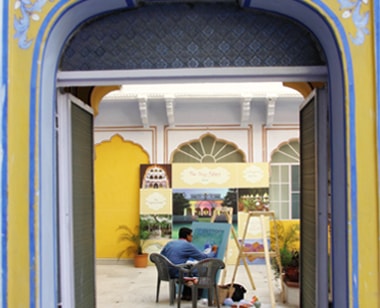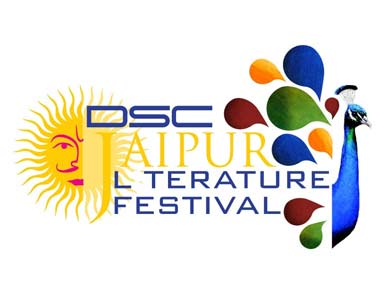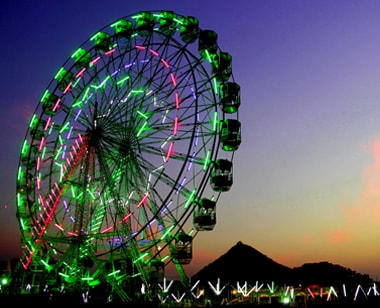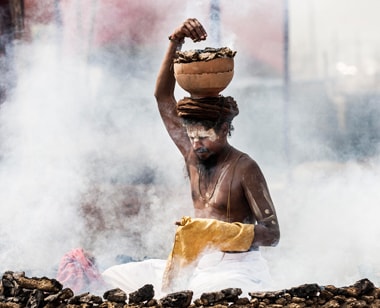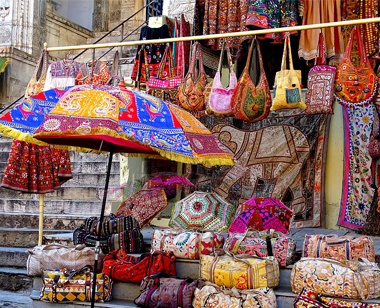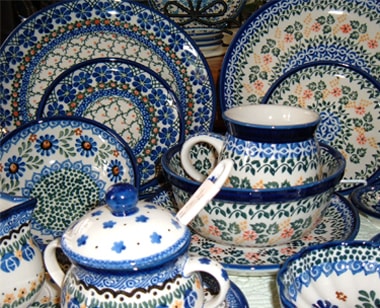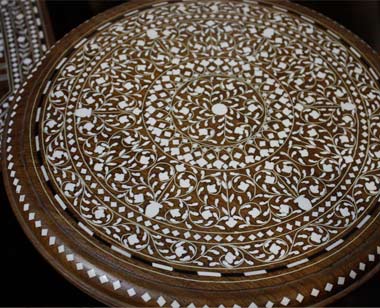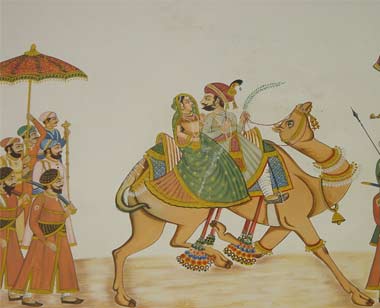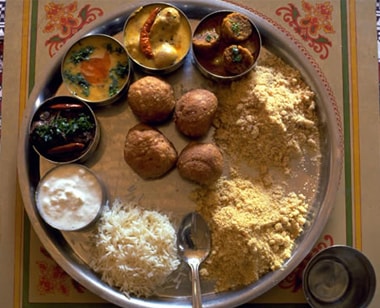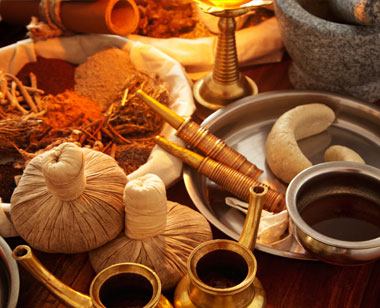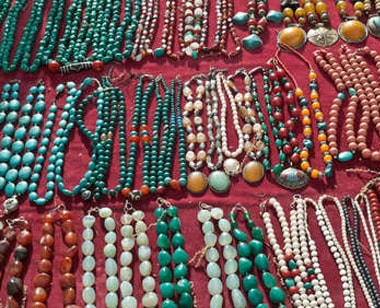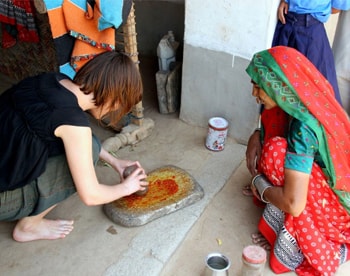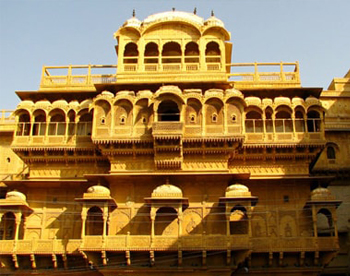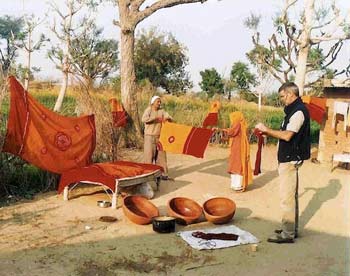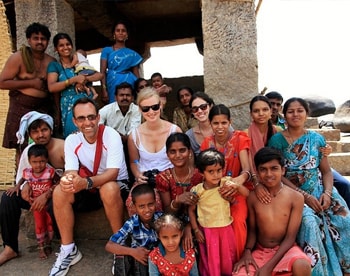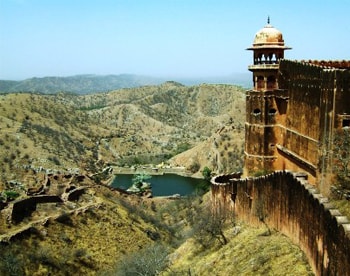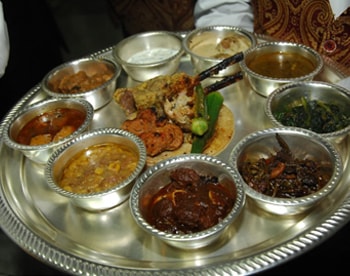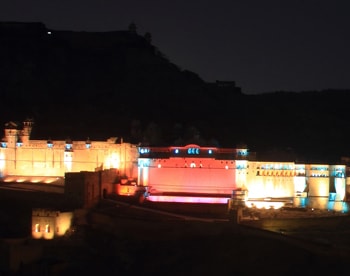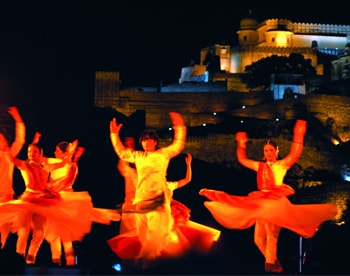The history of Chittor is one of the most stirring chapters in Indian history for it was there that the flower of Rajput chivalry sprang to life and the immense stretch of its sacred walls and ruined palaces relate the saga of innumerable sieges and heroism which has almost become a myth now.
Chittorgarh was one of the most fiercely contested seats of power in India. With its formidable fortifications, Bappa Rawal, the legendary founder of the Sisodia dynasty, received Chittor in the middle of the eighth century, as part of the last Solanki princess’s dowry. It crowns a seven-mile- long hill, covering 700 acres (280 hectares), with its fortifications, temples, towers and palaces.
From the eighth to the 16th century, Bappa Rawal’s descendants ruled over an important kingdom called Mewar stretching from Gujarat to Ajmer. But during these eight centuries the seemingly impregnable Chittor was surrounded, overrun, and sacked three times.
In 1303 Allauddin khilji, Sultan of Delhi, intrigued by tales of the matchless beauty of Padmini, Rani of Chittor, of her wit and charm, decided to verify this himself. His armies surrounded Chittor, and the sultan sent a message to Rana Rattan Singh, Padmini’s husband, to say that he would spare the city if he could meet its famous queen. The compromise finally reached was that the sultan could look upon Padmini’s reflection if he came unarmed into the fort. Accordingly, the sultan went up the hill and glimpsed a reflection of the beautiful Padmini standing by a lotus pool. He thanked his host who courteously escorted Allauddin down to the outer gate-where the sultan’s men waited in ambush to take the rana hostage.
There was consternation in Chittor until Padmini devised a plan. A messenger informed the sultan that the rani would come to him. Dozens of curtained palanquins set off down the hill, each carried by six humble bearers. Once inside the Sultan’s camp, four well-armed Rajput warriors leaped out of each palanquin and each lowly palanquin bearer drew a sword.In the ensuing battle, Rana Rattan Singh was rescued-but 7,000 Rajput warriors died. The sultan now attacked Chittor with renewed vigor. Having lost 7,000 of its best warriors, Chittor could not hold out. Surrender was unthinkable. The rani and her entire entourage of women, the wives of generals and soldiers, sent their children into hiding with loyal retainers. They then dressed their wedding fine , slid their farewells, and singing ancient hymns, boldly entered the mahal and performed jauhar.
The men, watching with expressionless faces, then donned saffron robes, smeared the holy ashes of their women on their foreheads, flung open the gates of the fort and thundered down the hill into the enemy ranks, to fight to the death.The second sack or shake (sacrifice) of Chittor, by which Rajputs still swear when pledging their word, occurred in 1535, when Sultan Bahadur Shan Of Gujarat attacked the fort.
Chittorgarh is the epitome of Chattari Rajput (a Hindu Kshatriya (Warrior) caste) pride, romance and spirit, for people of Chittor always chose death before surrendering against anyone.The History of this town is written in blood and sacrifice. It is a Symbol of all that was brave true and noble in the glorious Rajput Tradition.The antiquity of chittorgarh is difficult to trace, but it’s believed that Bhim the legendary figure of the Mahabharata, visited this place to learn the secrets of immortality and became the disciple of a sage, but his impatience to perform all the rites deprived him of his goal, and out of sheer anger he stamped on the ground creating a water reservoir, this reservoir is called as BhimLat. Later on, it came under Mauryas or Muri Rajputs, there are different opinions as to when it came under the Mewar ruler, but it remained the capital of Mewar till 1568, when it was shifted to Udaipur. It’s believed that Bappa Rawal the legendary founder of Sisodia clan, received Chittorgarh in the middle of 8th century, as a part of the dowry after marriage with lst Solanki princess, after that his descendants ruled Mewar which stretched from Gujrat to Ajmer, upto the 16th century.
History
The fort a standing senitel to the courage and valour of Chittorgarh, it stands tall over a 180 meter high hillock covering a massive area of 700 acres. The fort is believed to have been built by the Maurya rulers in 7th century A.D.The fort is a treasure house of history and historical monuments, the approach to the fort is very difficult. the one mile steep serpentine thoughfare is exhaustive and the fort is reached through huge seven pols or gates,which are infact the strong points having a watch tower and massive iron spiked doors. it was ravaged thrice, and each time phonix like it rose again. Allaudin Khilji was the first who invaded Chittorgarh in 1303, legend and history corroborate that this was because of his passionate desire to abduct Rani Padmini. But she perferred death to dishonour, and committed Jauhar alongwith the other ladies of the court.Chittorgarh was plundered again in 1535 by Sultan Bahadur Shah of Gujrat and finally by the Moghul Emperor Akbar, in 1567, in and attempt to subdue Maharana Udai Singh.The great Maharana Pratap,son of Rana Udai Singh II, is regarded as a personification of the values Rajputs cherish and die for. He took an oath to spend his life living in the jungles and fighting until he could realize his dream of reconquering Chittorgarh from Akbar (and thus reclaiming the glory of Mewar)
Rani Padmini
In 1303 Allauddin khilji, Sultan of Delhi, intrigued by tales of the matchless beauty of Padmini, Rani of Chittor, of her wit and charm, decided to verify this himself. His armies surrounded Chittor, and the sultan sent a message to Rana Rattan Singh, Padmini’s husband, to say that he would spare the city if he could meet its famous queen. The compromise finally reached was that the sultan could look upon Padmini’s reflection if he came unarmed into the fort. Accordingly, the sultan went up the hill and glimpsed a reflection of the beautiful Padmini standing by a lotus pool. He thanked his host who courteously escorted Allauddin down to the outer gate-where the sultan’s men waited in ambush to take the rana hostage.
There was consternation in Chittor until Padmini devised a plan. A messenger informed the sultan that the rani would come to him. Dozens of curtained palanquins set off down the hill, each carried by six humble bearers. Once inside the Sultan’s camp, four well-armed Rajput warriors leaped out of each palanquin and each lowly palanquin bearer drew a sword.In the ensuing battle, Rana Rattan Singh was rescued-but 7,000 Rajput warriors died. The sultan now attacked Chittor with renewed vigor. Having lost 7,000 of its best warriors, Chittor could not hold out. Surrender was unthinkable. The rani and her entire entourage of women, the wives of generals and soldiers, sent their children into hiding with loyal retainers. They then dressed their wedding fine , slid their farewells, and singing ancient hymns, boldly entered the mahal and performed jauhar.
How to reach Chittorgarh
PlaneBy Air
Nearest airport is Dabok Airport, Udaipur, well-connected to Delhi, Mumbai, Jodhpur and Jaipur by daily flights.
RailBy Rail
Chittorgarh Station is linked to Delhi by the Nizamuddin-Udaipur Express and to Jaipur by the Mewar Express. There are some other good options between Udaipur and Chittorgarh.
BusBy Bus
NH8 connects Jaipur and Delhi to NH79 at Ajmer, along which Chittor is a 3.5 hr drive away via Nasirabad and Bhilwara.
 +919828167660, +919414075013
+919828167660, +919414075013

